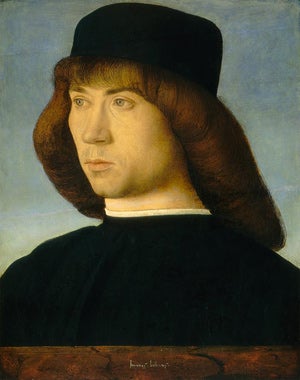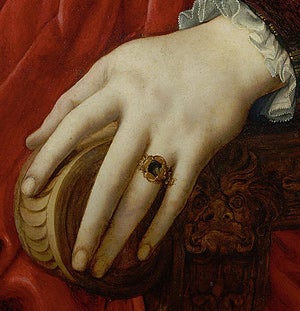Elizabeth Perkins
Columbia University graduate student
While reading through conservation records at the National Gallery in Washington, I found many references to Giovanni Bellini’s fingerprints all over the faces in his portraits. I squinted and stared in the gallery, but despite my best efforts and the indulgence of a lenient security guard, I could not get close enough. Returning home and finding a fantastic image of Bellini’s Portrait of a Young Man on Artstor, I finally saw those fingerprints, and they took my breath away. As a developing scholar, the resources that Artstor provides allows me follow up in way that was not possible for earlier generations of art historians.
When I began designing an undergraduate course on Renaissance portraiture for Columbia’s summer session in 2010, I was pleased to find a wealth of high resolution images to teach from on Artstor. Given the incredible quality of the images from collections like the Metropolitan Museum of Art, would the students avoid entering the actual museum? Would they be content with the images on their computer screens? I could not help but fear that I would have to make a case for looking at “real” paintings. My initial fears were soon put to rest, for Artstor itself made the case for me.
We met at Metropolitan Museum of Art on the second day of class. Each student chose two portraits for class presentations, and I instructed them to get to know their paintings, both in the museum and through the images on Artstor. The combination of in-person and at-home viewing produced extraordinary results. It engendered a number of aha! moments for the students, as the students were given two modes of accessing their works of art. They learned how to look closely and discern aspects of a painting’s history from its very surface. The ability to save a detailed view of an image was enormously helpful; at home students could save specific details to present in class. Rather than flipping quickly through slides, we moved slowly about the paintings, one inch at a time. Through close examination of the paint itself, we made connections between Italy and northern Europe, portraiture and religious works.
The students noticed how Antonello da Messina altered way he painted flesh in the dead Christ and the living; they observed how Giovanni Bellini changed his style from bold to a softly blended layers of oil. We confronted difficult issues of style, and were able to acknowledge how sometimes a damaged area can change the overall appearance of a painting. When we came to Giovanni Bellini, they were no less amazed than I was by the resolution of that image. In an interesting twist, the best images on Artstor encouraged a healthy and irreversible dissatisfaction with two-dimensional reproductions. Having seen a five-hundred-year-old fingerprint, my students could not wait to get out of my classroom and back to the museum, to the real things, and I could not have been happier about it.







